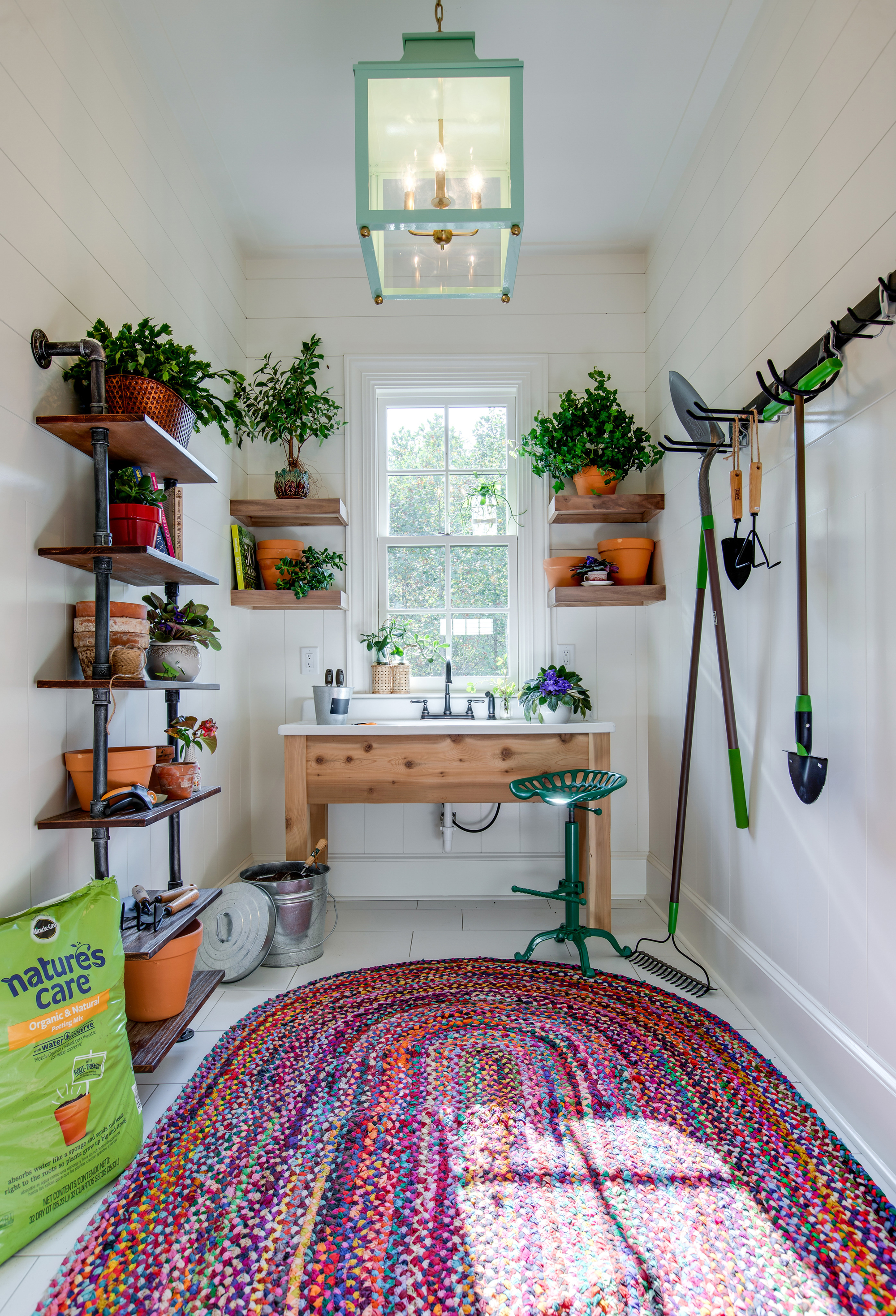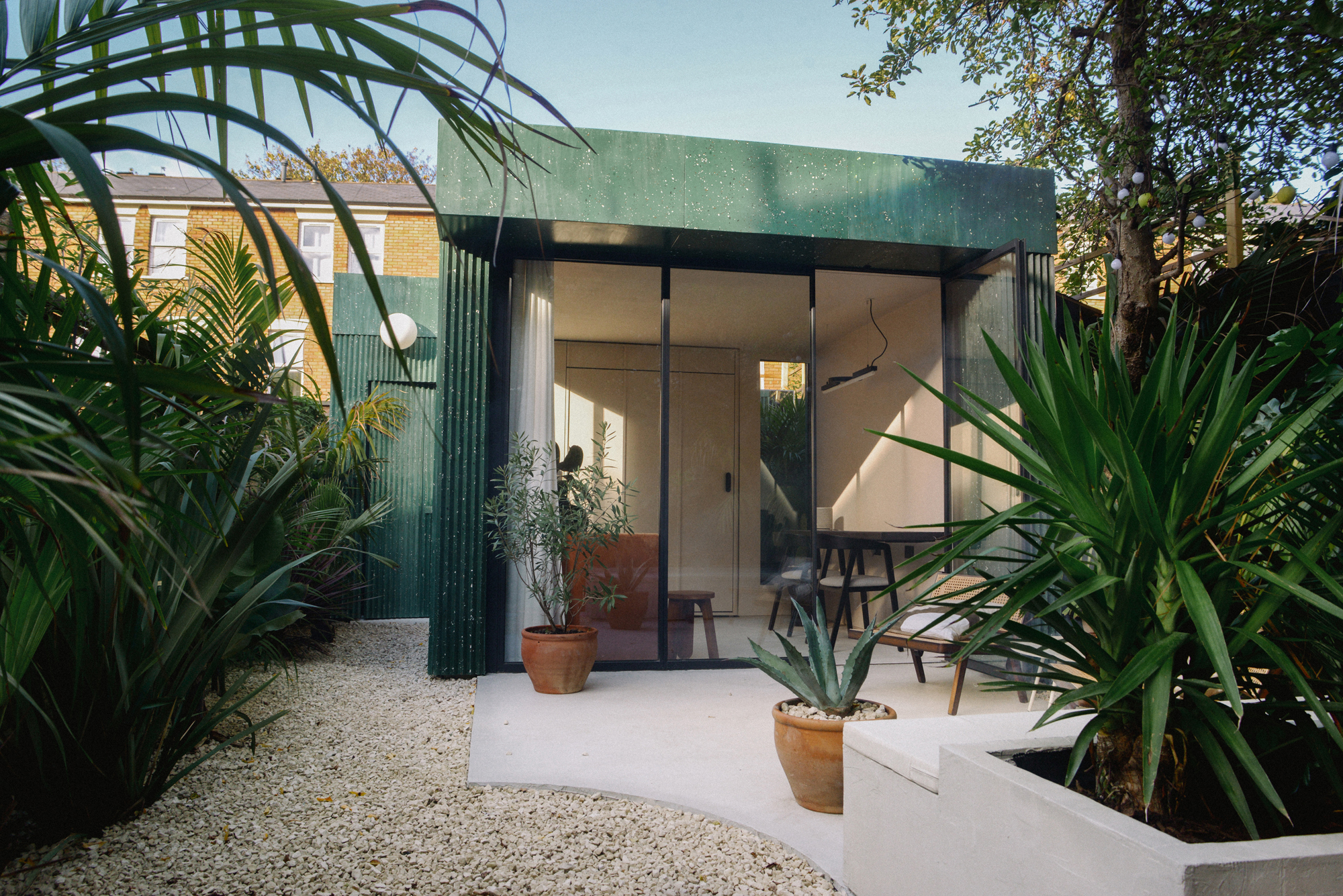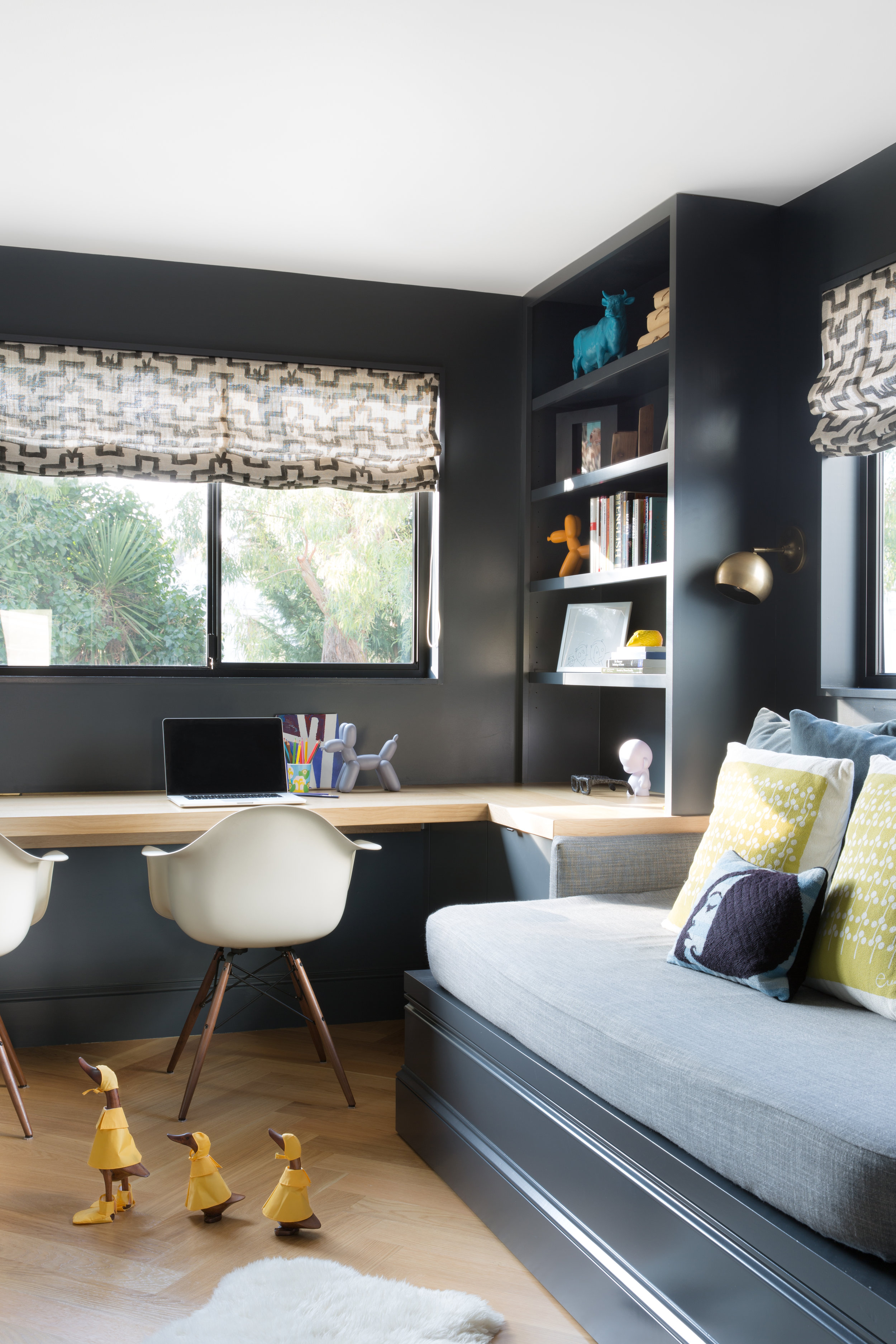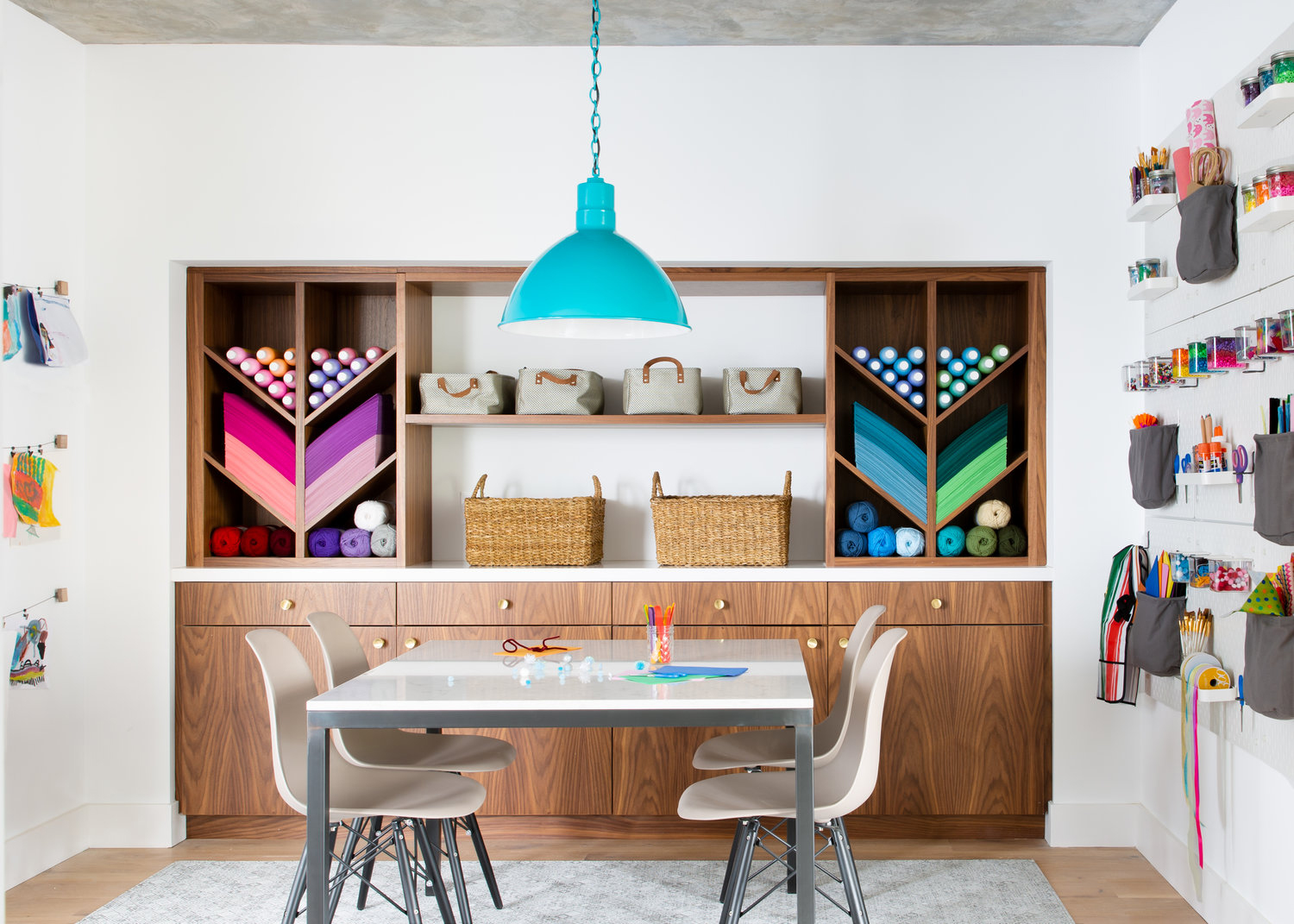The rise of the hobby room – 7 lessons from architects and designers about dedicating space to your passions
Is it worth dedicating space in your home to a hobby room? These designers think so...


For some, the idea of a hobby room is a total pipe dream, a luxury that their home simply can't afford. But for many people, in homes big and small, there exists a space in their house that's currently not being used to its full potential. That extra guest room that's used once a year or the ironing room that, while functional, doesn't bring you joy.
And really, isn't joy what we're working towards in our homes? Dedicating space to something you love doing and that feeds your spirit doesn't sound like a bad place to start in terms of making your home a happier one.
When it comes to your general wellbeing, it's easy to see why a hobby room might be beneficial. It has the potential to be a place to unwind and to help you focus, while keeping your hobby equipment organized and in one place, reducing clutter and therefore your stress levels. Plus, it gives you the opportunity to adapt your interior design to make it a better fit for your passions, too. If you love to paint, you can re-arrange furniture so that you have the perfect light, while if you want a meditation space, you can streamline your decor and introduce a color scheme that promotes peace.
Whatever the reason you want a hobby room, and whatever it's for, interior designers and architects are seeing an upward trend in requests for rooms dedicated to specific tasks. Here, they explain why they think it's such a good idea, how you can find room for one, and the biggest considerations for designing a well-rounded hobby space.
Real spaces that prove a dedicated hobby room is worthwhile
'What better luxury than focus, especially now?'
Emily Abruzzo, architect
1. Create space for focus

If there's one thing the modern world is good for, it's providing distractions. While losing focus may be particularly problematic when it comes to working from home, don't discount the effects it can have when it comes to your leisure time.
'The places we live are continually evolving with our needs and rituals,' says architect and designer Emily Abruzzo of Abruzzo Bodziak Architects, 'as homes are increasingly used for work, as well as sleeping, eating and playing. For clients in this Brooklyn townhouse, a dedicated space to listen to vinyl records was part of their brief to the designer. The idea of creating a listening room has been hailed as the next big interior design trend by some, but does an entire room dedicated to listening to music not seem redundant? 'Perhaps the listening room is a counterbalance to the workspaces so many people have now dedicated,' Emily ventures. 'This dovetails with an appreciation for artisanal audio equipment and the very real spatial needs of say, a record collection.'
'These things can coexist with our more traditional living spaces but allowing them their own space focuses the activity of listening,' she adds. 'What better luxury than focus, especially now?'
The Livingetc newsletters are your inside source for what’s shaping interiors now - and what’s next. Discover trend forecasts, smart style ideas, and curated shopping inspiration that brings design to life. Subscribe today and stay ahead of the curve.
This room belongs to a client who designs hi-fi “sound sculptures” and is a place to test and demonstrate his speakers and other equipment, but it is also a place for spending time with others, listening. 'Technical details include a dedicated electrical circuit, floor outlets, and sound-isolating insulation, but in many ways this is really just a large, well-proportioned room that allows for reconfiguration,' Emily says.'
2. Think outside the box

Some variations of hobby rooms are more common than others, but in reality, if you enjoy doing something, there's scope for giving yourself dedicated space to it.
'We've definitely seen an increase in specialist room requests,' says Maia Lemlij at XUL Architecture. 'The most common have been home gym ideas and yoga rooms, but we’ve also had requests for “teen dens” - which include games and cinema or TV rooms - as well as spas (including jacuzzis and saunas), designated relaxation rooms, beauty rooms with space for massage or sports therapy, libraries and reading rooms, bars, acoustic music rooms and arts and crafts studios.'
For Marsha Todd of Sailer Design, some of the most unusual spaces include golf simulator rooms, but while the idea of a potting room, as pictured above, might sound novel to some, it's a common request for Marsha. 'We are often asked when we are designing for potting rooms,' Marsha says, 'and as we're often building from scratch, we plan from the outset so hobby rooms don't mean sacrifices in other spaces.'
3. Weigh up a hobby room against that extra bedroom

Finding room for a hobby room is, for most people, the real conundrum. But, if you have a guest bedroom, it's worth weighing up its value against the daily benefits of creating room your passions.
'Dedicating space for work or hobbies is a fantastic thing to do if there is space, because it allows the bedroom, for example, to remain a refuge from distractions,' suggests Emily Abruzzo. 'To be able to get away from something or to have a destination space within one’s home can outweigh having an extra bedroom that might only be used by guests on occasion.'
In an ideal world, your hobby room can do both. In designing a work and hobby space in his backyard, architect Tim Robinson of Sonn Studio was keen to create a space that provided overspill sleeping. 'If a friend wants to stay over the bed is pulled down from the joinery and the concealed curtain is drawn around the full space to transform it into a cozy bedroom,' Tim explains.
4. Say hello to the 'flex room'

These spaces, that work for different functions as and when they're required, have been given a new name in modern parlance. The 'flex room'.
For example, as well as providing the aforementioned bedroom, Tim's garden office isn't just limited to a workspace.
'The functions of this space are a real mix and this was always the intention,' he says. 'During the day all our work equipment is pulled out of the built-in storage to use it as an office, then as the evening draws in we can open the doors and have a drink on the garden terrace or even get the decks out and continue the party later into the evening.'
'The key to designing a flex room is designated storage for all in one area, but flexible, adaptable and convertible storage,' suggests California-based interior designer Regan Baker. 'For example, a family/guest/office room should have a built-in desk within a millwork closet, and should include adjustable shelves and a rod for hanging clothes when guests come over.'
'Stylistically, for flex spaces, we always lean toward keeping our millwork storage closets classic and consistent with other architectural details throughout the home,' Regan adds, 'as it allows the space to evolve over time—as interests change and/or the room takes on new purpose.'
5. Create 'social distance'

The idea of an external hobby room is becoming more popular, especially where there's limited space in the house, but a backyard with space to explore the idea of a garden room.
'Being able to walk away from the house gives you the physical and mental separation that is needed, especially with the rise in working from home,' Sonn Studio's Tim says. 'It provides the needed relief from the main house's urban context; a calm and relaxing environment separate from the main living accommodation.'
XUL Architecture's Maia Lemlij agrees. 'Many hobby rooms benefit from being kept separate from the rest of the living spaces, with noise levels and acoustics also being key considerations.'
'Many times these rooms are created within separate garden buildings or in the basement, to help promote social distance,' Maia suggests, 'particularly in families with teenagers. The main goal is often to create a separate safe haven away from the buzz of family life.'
Here, designer Leanne Ford turned a small outhouse into a peaceful yoga retreat, inspired by Wabi-Sabi design principles.
6. Make room for the side hustle
In the modern world, there's a rare hobby that doesn't, somewhere along the line, turn into a so-called 'side hustle'. This ends up bridging the gap between hobby rooms and home offices in many cases. 'A lot of people are looking at income from other sources and have little craft projects or separate sidelines that they want to do in separate spaces,' says Melissa Robinson, director of MW Architects.
If that's a potential on the horizon, it's worth considering how your space can adapt to create a work zone too.
7. Use it as a space for kids

When it comes to hobby rooms, the kids are ahead of the game. They already have playrooms, gaming rooms and more, but if you have the room, it's possible to extend the space you dedicate to your kids' hobbies too.
The craft room is one such example, and one that works particularly well, given that it can be one of the messiest activities for children. 'Hobbies and crafts should have a space within your home to celebrate and promote creativity,' says Regan Baker.
In this property, re-designed by Regan, the builder had originally fabricated this space to serve as a proper wine room. 'The family challenged us to repurpose the existing cabinetry and overall footprint and design the space as a craft room for their children, and also being accessible for adults,' says Regan. 'We utilized the entire footprint of the wine room, including the existing wine cabinet storage, wall space for the young budding artist to display their art, and organizational storage canisters easily accessible for little ones.'
What do you put in a hobby room?
'The most important things to consider are the range of different activities that might take place within the space,' says XUL Architecture's Maia Lemlij, 'along with how frequently they will be used, to ensure the space is maximised to full effect.
Regardless of the type of room you're creating, it can be a brilliant idea to include soundproofing in a hobby room. If your hobby is loud, such as with the listening room idea, it saves the rest of the household from joining into your leisure pursuits against their will, while if you want a quiet space for yoga or meditation, it protects you from the hubbub of family life.
Storage is always a good idea, as most hobbies require some tools or equipment. This also means that if you do need to transition your space into a guest room from time to time, it's possible, without your guests living among your half-finished crafts or towering vinyl collection.
Give yourself multiple seating options too (unless you're creating a yoga studio, of course). This gives you multiple options to get comfortable as you do what you love. More upright desk seating is better for some tasks, while an armchair to relax into will ensure you use your hobby room more.

Hugh is Livingetc.com’s editor. With 8 years in the interiors industry under his belt, he has the nose for what people want to know about re-decorating their homes. He prides himself as an expert trend forecaster, visiting design fairs, showrooms and keeping an eye out for emerging designers to hone his eye. He joined Livingetc back in 2022 as a content editor, as a long-time reader of the print magazine, before becoming its online editor. Hugh has previously spent time as an editor for a kitchen and bathroom magazine, and has written for “hands-on” home brands such as Homebuilding & Renovating and Grand Designs magazine, so his knowledge of what it takes to create a home goes beyond the surface, too. Though not a trained interior designer, Hugh has cut his design teeth by managing several major interior design projects to date, each for private clients. He's also a keen DIYer — he's done everything from laying his own patio and building an integrated cooker hood from scratch, to undertaking plenty of creative IKEA hacks to help achieve the luxurious look he loves in design, when his budget doesn't always stretch that far.